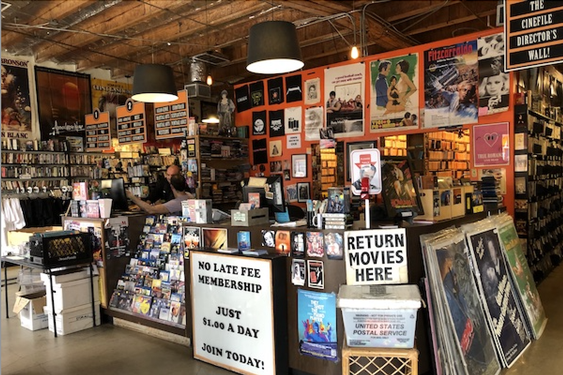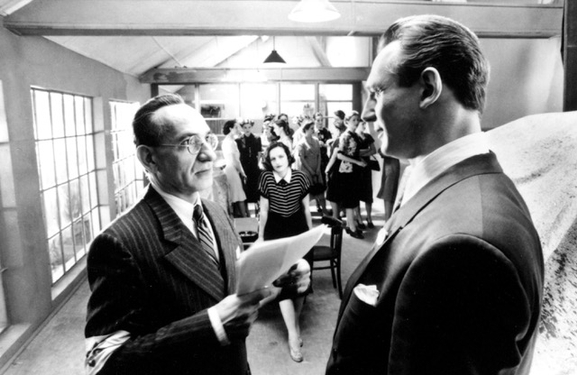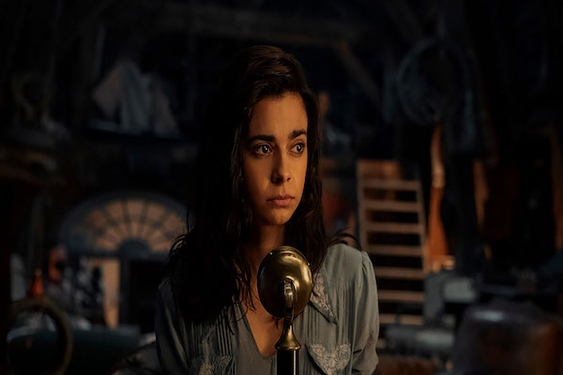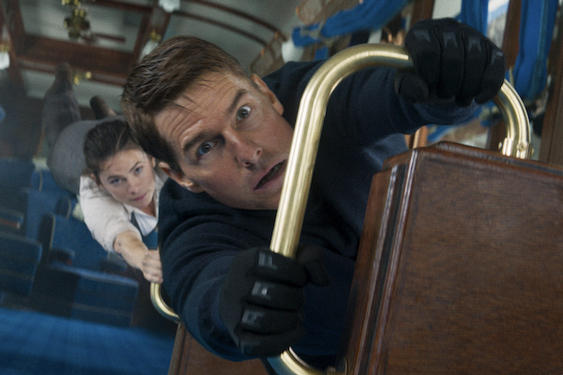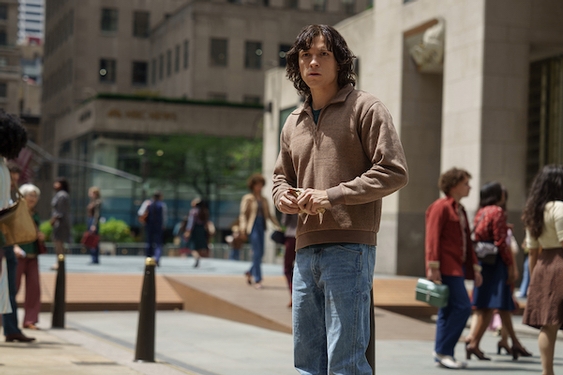King Kong was supposed to be the season’s all-conquering movie, yet
everyone is talking about Brokeback Mountain.
The Academy Awards were created as Hollywood’s ultimate act of self-congratulations,
yet the upcoming Oscar nominations are likely to be dominated by films made outside
of the studio system.
Studios may spend hundreds of millions of dollars on a single movie to win the
box-office lottery, yet last year’s most profitable film was a redubbed French
documentary – about penguins – picked up at the Sundance Film Festival.
Now the calendar has turned, the latest edition of Sundance has just kicked off
and so-called independent film has seized center stage in a way unseen since four
of the five 1996 best picture nominees were non-studio offerings. True, of the
almost $9 billion grossed at the North American box office last year, only a small
(and in-calculable) fraction was generated by films not made by Hollywood. But
in terms of cultural impact and popularity across a wide range of formats –
DVD/home video, pay-per-view, cable and broadcast television – the specialty
films are having their day.
Consider Paul Haggis’ Crash, a panoramic racism-probing drama set in Los
Angeles. The movie, made independently and bought by Lions Gate at the 2004 Toronto
International Film Festival, was released May 6 and did surprisingly strong business
for such a solemn work, grossing $53.4 million overall while never reaching higher
than No. 4 on the weekly box-office chart.
In contrast, the Adam Sandler comedy The Longest Yard grossed $58.6 million
over just the four-day Memorial Day weekend. Yet when Comcast made Crash one of
its On Demand offerings in late October, the movie was the provider’s No.
1 pay-per-view movie for three straight weeks.
Now Crash is a prime contender for a best picture Oscar nomination (to
be announced Jan. 31) along with such non-studio films as Brokeback Mountain
(distributed by Focus, Universal’s specialized arm), Good Night, and
Good Luck (Warner Independent) and Capote (Sony Pictures Classics).
All four of those movies received top awards nominations from the Directors Guild
of America, Producers Guild of America and Screen Actors Guild, a potent one-two-three
punch of Oscar indicators. All four also are among the 10 Writers Guild nominees
for screenplays.
The Independent Spirit Awards were conceived as a high-minded, low-budget alternative
to the Oscars, yet Brokeback Mountain, Capote and Good Night, and Good
Luck are best feature nominees there, too, and Crash is up for best first
feature.
The definition of "independent" film already was slippery enough. Most
of the prominent indie film distributors are now owned by the major film companies
(Lions Gate being the biggest exception), and some movies distributed by the studios
are independently made, such as Woody Allen’s Match Point (bought by DreamWorks
after its Cannes Film Festival premiere) and even George Lucas’ Star Wars
films.
What’s without question is there’s been a spate of films that don’t
feel like Hollywood movies despite the frequent presence of stars, and these films
by and large rescued what had been considered a pretty dismal 2005. These are
movies driven by ideas, characters and performances rather than marketing hooks,
and their budgets were kept low, with stars cutting their usual paydays, so a
$20 million box office take may be considered triumphant.
In addition to those films mentioned, this category would include The Constant
Gardener, A History of Violence, The Squid and the Whale, North Country.
New York-based sales agent/lawyer John Sloss, who will be trying to sell 10 films
at the Sundance festival, speaks of the evolution of the "blockbuster specialized
movie."
"There is this form of literary, smart $5- to $12-million film with movie
stars that is much more systematized," Sloss says. "It used to be once
in a blue moon."
One reason behind these films’ emergence is simple economics. David Miller,
entertainment analyst for the Los Angeles-based Sanders Morris Harris Group, said
over the past few years the most profitable movies have been either big-budget
blockbusters (Spider-Man 2, Star Wars: Episode III, Shrek 2) or low-budget
surprises (Saw, the new Hostel, March of the Penguins, even The
Passion of the Christ).
Plus, he notes, independent films tend to "overindex" on home video,
"meaning that more people see them on home video than in the theaters."
And home video is the film companies’ bread and butter, generating about
half of a movie’s total take, compared with about 25 percent for domestic
box office and 25 percent for international box office and television, Miller
says.
The growing popularity of movies on the home screen may be leveling out the playing
field. Although we’re compelled to see King Kong or other special-effects
driven spectacles on the big screen (if at all), we’ve been conditioned to
be more adventurous with our television viewing, whether we’re checking out
a challenging HBO series such as "Deadwood" or exploring various niche
channels.
"I have always said this: The more channels that are available, the more
material that’s available, the more that audiences become sophisticated and
their tastes elevate," says Ruth Vitale, former Paramount Classics co-president
now heading up First Look’s Pictures’ theatrical division.
There’s a generational component to this equation as well. Cynthia Swartz,
a principal in the public relations firm the Dart Group, notes that her husband’s
parents in Florida see almost every serious movie released. Meanwhile, Baby Boomers
are becoming empty nesters and are seeking out more adult fare.
Mark Cuban – who oversees a budding film empire that includes Landmark Theatres,
Magnolia Pictures and the HDNet high-definition television network – notes
in an e-mail: "Kids don’t seek out smaller movies, but I believe adults
look for a variety of types and are less concerned with budgets and more concerned
with entertainment value. If it’s a great movie, no one is going to check
the budget before they go."
Advancing technology may prove to be one of independent films’ best friends.
Dramatic and documentary filmmakers already have benefited from being able to
shoot in the much cheaper and easier digital format, and National Association
of Theater Owners President John Fithian says 2006 is the year in which many theaters
are shifting to digital projection, thus greatly reducing costs for striking and
transporting prints.
Plus, as more home viewers order their films online or On Demand, companies will
have to worry less about vying against higher-profile releases for placement at
a Wal-Mart or Blockbuster. "As technology makes shelf space less physical,
that should be good for independent films," Picturehouse President Bob Berney
says.
So does all of this mean that distributors will be traveling to Park City, Utah,
ready to empty their wallets for new Sundance films?
Not necessarily.
For one, for every surprise Sundance sensation like March of the Penguins or Napoleon
Dynamite, there are many acquisitions that fizzle, including last year’s
Loggerheads and Dear Wendy. And the festival is being billed as a "back to
the roots" year, meaning that many of the selections are on the grim, personal
side, with Tilda Swinton and Amber Tamblyn starring in the infanticide drama Stephanie
Daley and Patrick Fugit topping the quirky suicide afterlife tale, Wristcutters:
A Love Story.
But to festival programming director Geoffrey Gilmore, Sundance’s films ultimately
shouldn’t be judged on their crossover commercial appeal so much as their
creativity and artistry.
"They may not play to the (box-office) numbers that some people want them
to, but the work is fresh and original and exciting, and some of the work is challenging,"
he said. "Some of the work is experimental and pushing an edge, and that’s
what independent films should be about as well."
© 2006, Chicago Tribune.
Distributed by Knight Ridder/Tribune Information Services.
Film: Special Features [Indie Films]
Indie Films: Doing Bigger Business
By Mark Caro

Article posted on 1/23/2006
This article has been viewed 3315 times.




